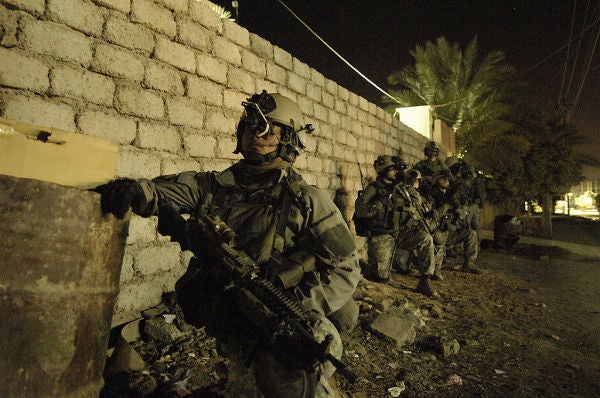Ranger Veterans Should Step Out Of The Shadows
We need more books like Violence of Action. As a society that has lived with war on the periphery for...

We need more books like Violence of Action. As a society that has lived with war on the periphery for more than a decade, modern Americans have far too many untold stories. Stories serve so many purposes. As a nation, they build our history, immortalize glory, and serve as valuable tools of therapy. Violence of Action is a collection of firsthand accounts from various authors by and about Rangers of the 75th Ranger Regiment. Modern-day Rangers are not accustomed to sharing their stories with non-Rangers, but Violence of Action breaks through that stigma as a work of literature that holds the potential to serve as the stepping-off point for a generation of quiet-professional warriors.
When a platoon of 40 men executes a mission, each walks away from with a unique experience. Violence of Action collects the ground-level viewpoints of Rangers who write from their respective vantage point. These are not the stories of the senior leaders nor are they redacted or conspiratorially revised histories to support a hidden agenda; they are heartfelt recollections that strive to maintain the integrity of promises made not to disclose what should be protected. The book builds a foundation for truly scalable history; as more Rangers from these phenomenal missions capture their own experiences in writing, the true calamitous nature of combat will ironically become clearer and recorded history will be more accurate.
Many war books draw negative feedback for their lack of anything resembling humility or gratitude. The very nature of Violence of Action as a collection of short writings from a sampling of Rangers (as well as other contributors, such as a Ranger wife and a Gold-Star mother) helps to inoculate this book from the scorn of other veterans. The book also clearly took steps to ensure compliance with operational security concerns. This is important to note, because nothing will bitter a veteran faster than reading information in a book they consider a violation of their non-disclosure statement. Regardless of legality, it is a betrayal of trust.
Glory abounds in this piece of work, but it presents as a byproduct of raw honesty; it lacks the familiar omnipresent undertone of self-aggrandizement. Rather, Violence of Action transcends the pettiness that, truthfully, turns so many veterans off from reading first-hand accounts from other “warriors.” Glory here goes to the unit that produced so many fine Americans, their parents, their families, and their hometowns. Rangers don’t seek glory, and only relish it among one another, no books required.
Violence of Action has more healing power than any prescription. This book belongs on the bedside table of so many service members and veterans — Rangers or otherwise — when they wake up in the middle of the night, because there is a story in this book that will help them reconcile. It is so very hard to relate combat experiences to others, even veterans from other wars. Yet it is vital to relate and to connect with those who have shared, suffered, and lost on the same ground.
Many brave and well-purposed leaders have written books (and many more surely will). Not to discredit or discourage their contribution to the history, but there is something sacrosanct about the account of a machine gunner that removes all suspect motivations. That Ranger author was healing himself through his writing and the healing continues with every veteran who reads, connects, and relates to the moment. Even if the reader wasn’t specifically there, the familiarities extend to his own battleground, far more similar than different, and suddenly that Ranger doesn’t feel as alone in the middle of the night.
It’s hard to write anything. Try it if you haven’t and you’ll see for yourself. Now, try to overcome the fear of others critiquing what you wrote. This fear is insurmountable for so many should-be storytellers. And this fear is why Violence of Action is so valuable. It gives strength to others to take the leap — veterans do want to read what their fellow warriors experienced. They want the writer to benefit from the healing process it provides and they want what they read to touch their own lives. It is a different kind of courage than jumping from an aircraft or following your team leader through the breach, but it is equally worthy to recognize, encourage, and most important, to emulate.